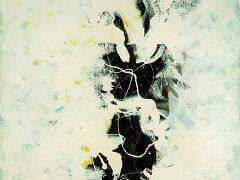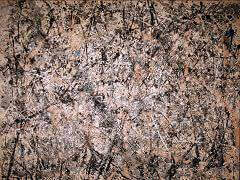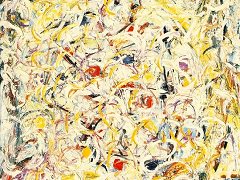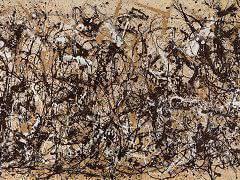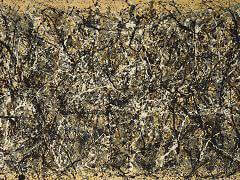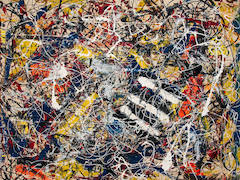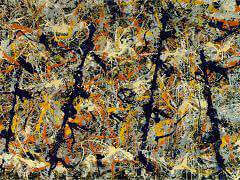The Moon Woman Cuts the Circle, 1942 by Jackson Pollock
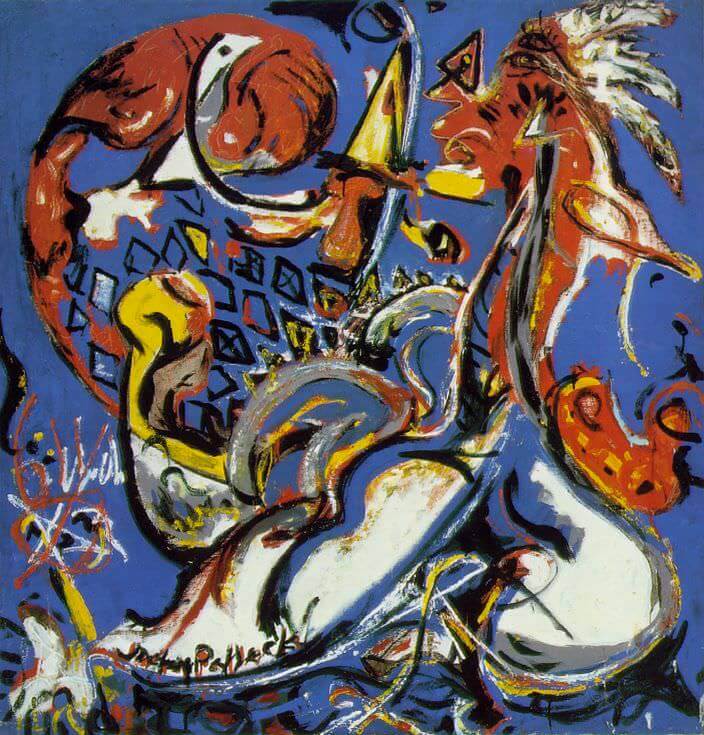
Like other members of the New York School, Jackson Pollock was influenced in his early work by Joan Miro and Picasso, and seized on the Surrealists'
concept of the unconscious as the source of art. In the late 1930s Pollock introduced imagery based on totemic or mythic figures, ideographic signs, and ritualistic events, which have been interpreted as pertaining to the buried
experiences and cultural memories of the psyche.
The Moon Woman Cuts the Circle, 1942 suggests the example of Picasso, particularly his Girl Before a Mirror of 1932. The palettes are similar, and both
artists describe a solitary standing female as if she had been x-rayed, her backbone a broad black line from which her curving contours originate. Frontal and profile views of the face are combined to contrast two aspects of the
self, one serene and public, the other dark and interior.
The subject of the moon woman, which Pollock treated in several drawings and paintings of the early 1940s, could have been available to him from various sources. At this time many artists, among them Pollock's friends William
Baziotes and Robert Motherwell, were influenced by the fugitive, hallucinatory imagery of Charles Baudelaire and the French Symbolists. In his prose poem "Favors of the Moon" Baudelaire addresses the "image of the fearful goddess,
the fateful godmother, the poisonous nurse of all the moonstruck of the world." Although it is possible that Pollock knew the poem, it is likelier that he was affected in a more general way by the interest in Baudelaire and the
Symbolists that was pervasive during the period.



